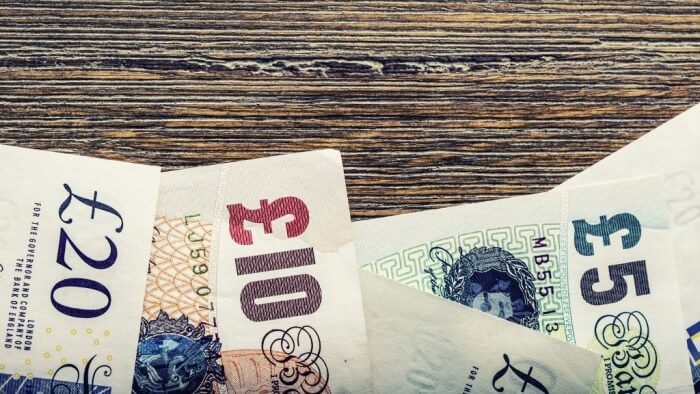What a 100 days it's been. One expert sums up the situation for business and looks ahead to another potentially tumultuous period ahead.
100 Days Of Brexit: What Is The Business Impact So Far?
What a 100 days it's been. One expert sums up the situation for business and looks ahead to another potentially tumultuous period ahead.

To put it mildly, quite a lot has happened in the 100 days since the UK voted to leave the European Union. Alongside the political turmoil triggered by the referendum result, the past three and a bit months have seen major economic and currency fluctuations that have, inevitably, impacted on British businesses.
Brexit shockwaves
The economic consequences were all the more dramatic because of the surprising nature of the result.
With bookmakers offering odds of 1/10 on Remain winning the week before the Referendum, the decision to leave saw an unprecedented fall for the pound in relation to the US dollar; from around 1.50 at 11pm on the 23rd June to 1.32 just six hours later.
On 6th July the pound fell further, dropping below 1.28 for the first time since 1985. It also dropped to 1.1450 against the EUR on August 16th; a three year low.
For businesses that import, this drop in the pound was undoubtedly a major setback and the ongoing weakness is likely to increase costs for some time. However, for exporters, the fall in sterling – and the fact it’s remained low – could be a major boost.
In fact, savvy exporters have been locking in post-Brexit exchange rates with forward contracts, to ensure that they can reap the rewards for some time to come – even if the pound does rebound.
Further consequences of the vote to leave came when the Bank of England cut interest rates for the first time since the financial crisis, taking them to another all-time low of .25%.
The bank also injected liquidity into the UK economy with another €60B of quantitative easing. With interest rates so low, now is a good time for companies to get their hands on a small business loan – if they qualify for one.
What’s next?
Looking ahead to the next 100 days, the pound is unlikely to reach anything like its pre-Brexit value in the short to medium term, despite more positive economic data in recent weeks. In fact, a move downwards is currently looking much more likely.
The uncertainty over when Theresa May will trigger Article 50, and what the final outcome of the Brexit negotiations will be, hangs over sterling.
October’s growth figures are the next major event on the horizon for the UK economy, followed by the Autumn statement from the new chancellor, Philip Hammond.
The target of returning the UK’s trade balance back to a surplus has already been ditched and it will be interesting to see what loosening of fiscal policy the chancellor announces to counter the effects of Brexit. Some sort of infrastructure or house building programme is likely, in an attempt to promote growth in the UK economy.
However, these measures are unlikely to fully counteract the challenges facing the economy – and small businesses that operate within it. With numerous trade deals to sort out, as well as the potential for London to lose its standing as Europe’s pre-eminent financial centre, the headwinds for the UK economy will be there until at least the end of the decade.
And there could be further volatility on the horizon. While in recent months businesses have been able to use the US dollar as a safe haven, the upcoming presidential election could well change that.
Both the pound and US dollar could also be adversely affected if the US decides to elect Donald Trump as President of the United States.
The Republican nominee’s aggressive tone over immigration and a raft of other issues could see the dollar weaken, should he enter the White House. With jitters hanging over the pound anyway, a Trump victory could see investors pile into the more stable yen, Swiss franc and gold – all to the detriment of sterling.
Planning for instability
Given all of this uncertainty, SMEs should be looking to protect themselves from risk against further currency fluctuations.
The exact approach will depend on the needs of your business but, as an example, you could look to reduce the uncertainty by buying foreign currency now to be used later by way of a forward contract.
Forward contracts essentially allow you to buy now but pay later, locking in a rate and delivering your funds at a later date. If you can estimate how much your business will receive in foreign currency over the year, you can lock in a single rate now for the full amount, protecting your business from any potential appreciation in the value of the pound
Alternatively, if you think your business could benefit from future currency movements, you can still leave a percentage of your funds open to better market conditions.
If you can wait to transfer and you think the current exchange rate might improve, you could consider a limit order. With this tool, you can nominate your ideal exchange rate, at which your funds will automatically be transferred when reached.
For businesses that trade across borders, there has never been a more important time to get to grips with the currency markets – talk to an expert and ask questions about how currencies relevant to your business have performed or might be set to perform.
Try to get a feel for what impacts the value of the pound and any other currencies you buy and sell. Brexit is obviously the major event for the pound right now, but there are a lot of other factors, so keeping up to date on the news will help you to negotiate the currency markets.
Whatever your core business, having a robust currency strategy in place will be vital – not just for the next 100 days, but for the longer term in this period of extraordinary instability.
Alex Edwards is head of the corporate desk at UKForex, where he helps businesses of all sizes to manage their exposure to currency risk.
Thanks for signing up to Minutehack alerts.
Brilliant editorials heading your way soon.
Okay, Thanks!




